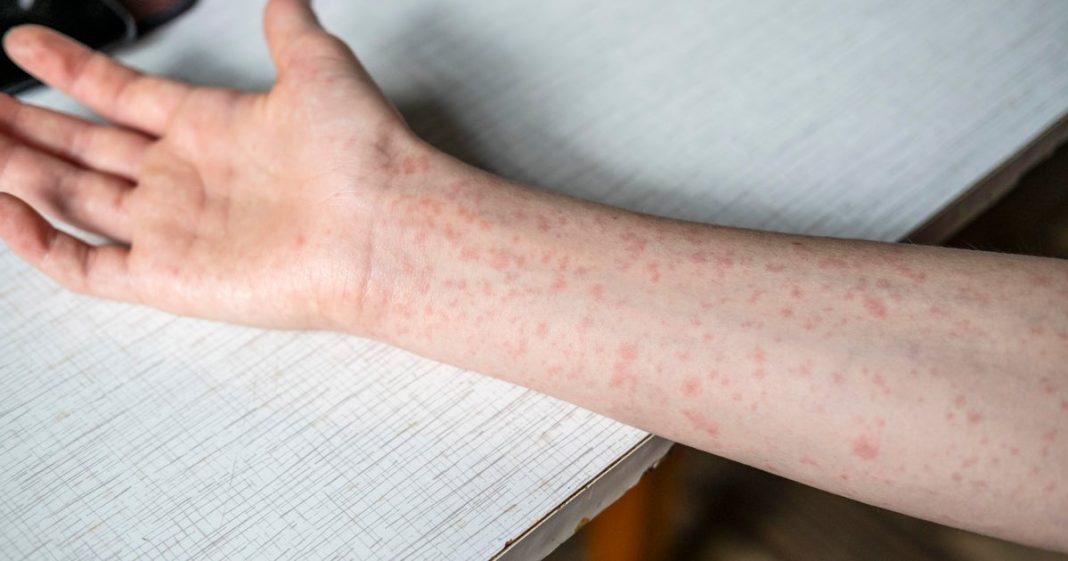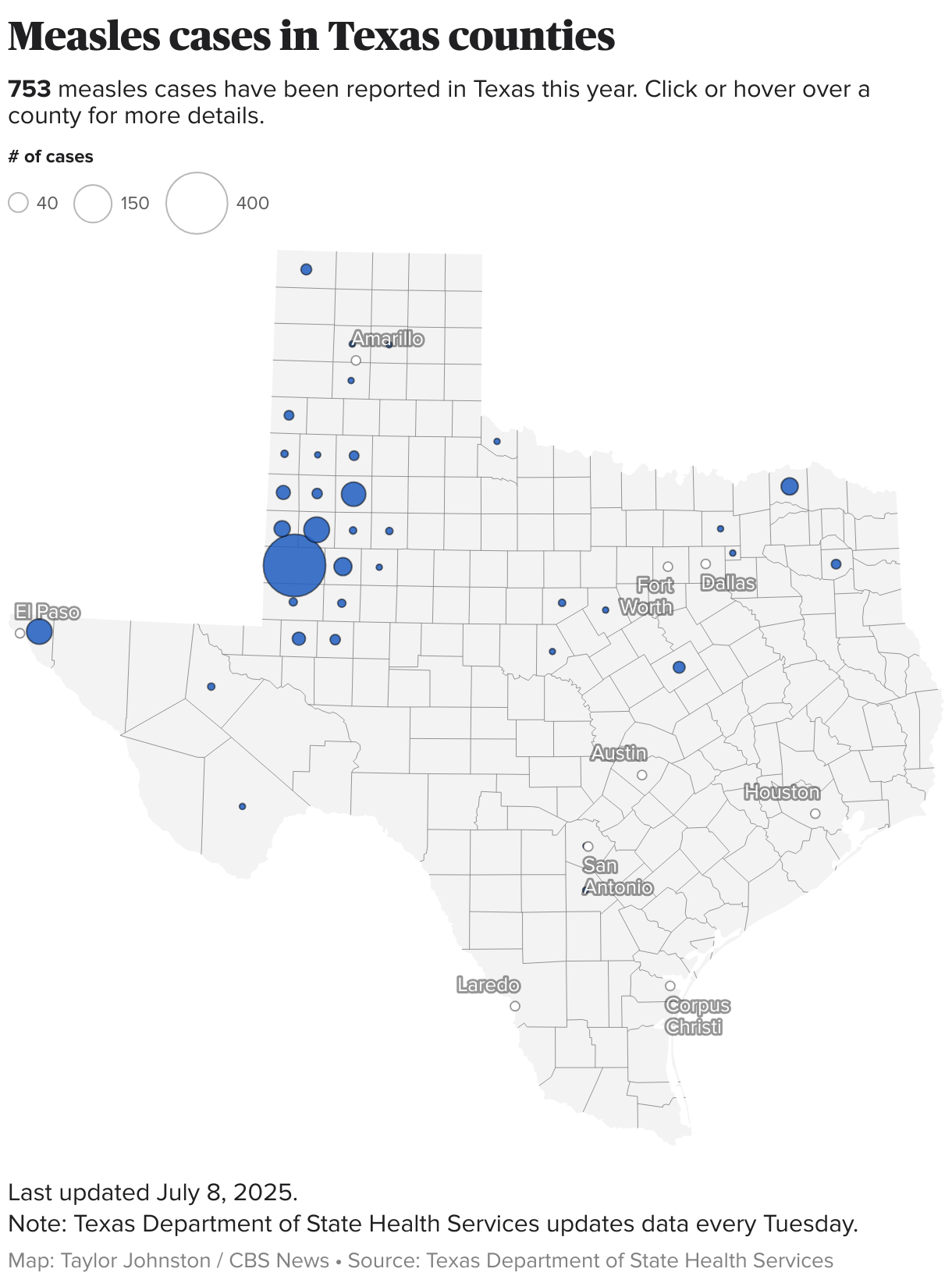
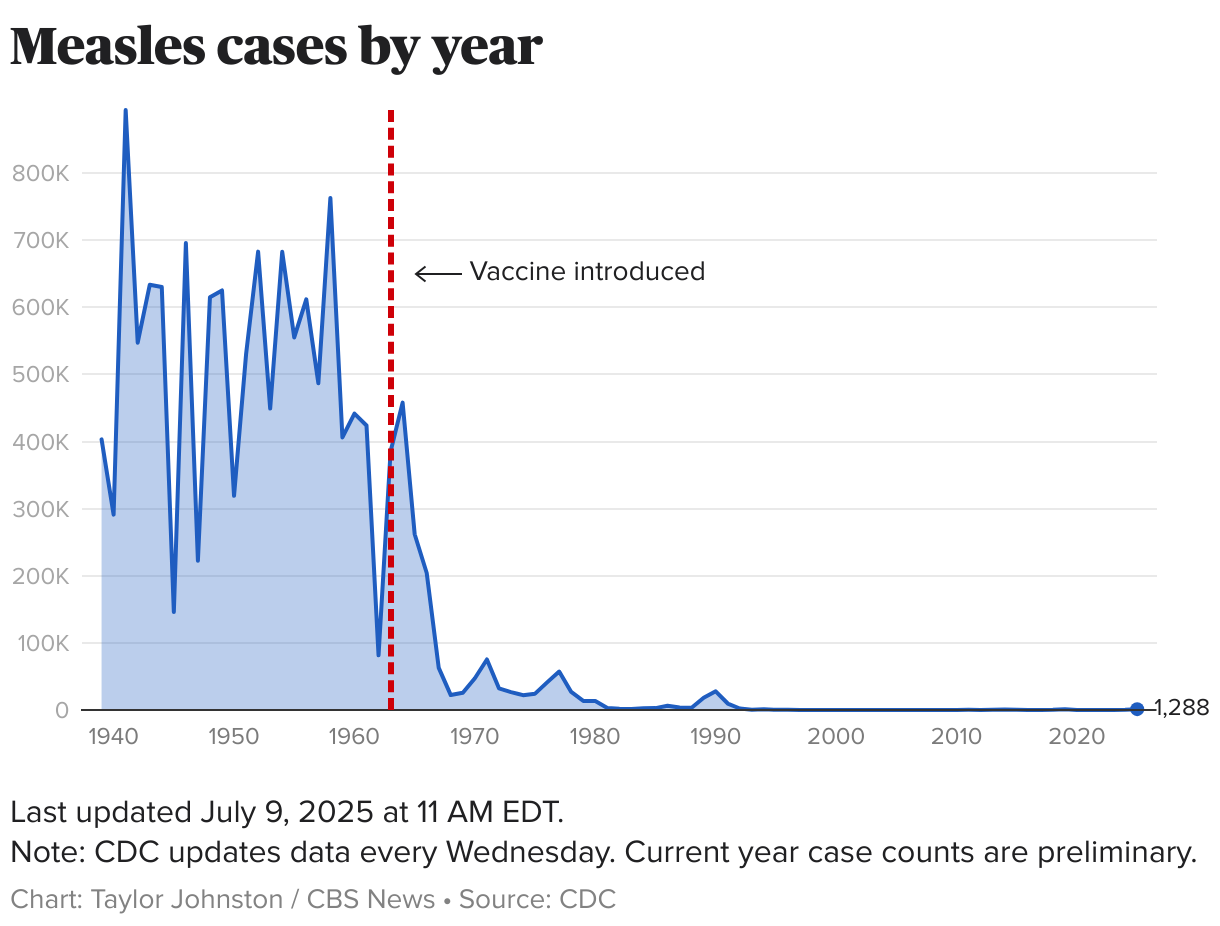
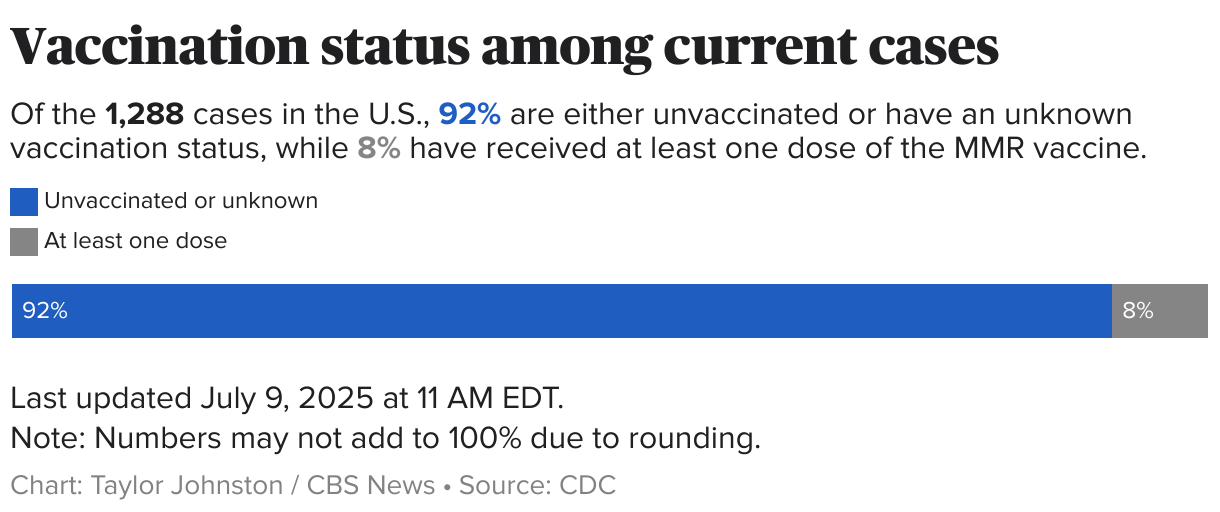
The United States has recorded 1,288 measles cases so far this year, the highest total in 33 years, according to Centers for Disease Control and Prevention data out Wednesday.
Just over halfway through 2025, the U.S. has now surpassed 2019’s total number of infections, when 1,274 measles cases were confirmed, which at the time was the highest in more than a quarter century.
This is now the worst year for measles in the U.S. since 1992, when 2,126 cases were confirmed. The virus was officially declared eliminated in the U.S. in 2000, after high rates of vaccination succeeded at halting nearly all domestic spread.
Maps show measles cases across U.S., Texas
The largest share of this year’s infections are connected to an outbreak in West Texas that led to the deaths of two children. The number of cases in Texas alone has grown to more than 750. Measles infections have been confirmed in 38 states.
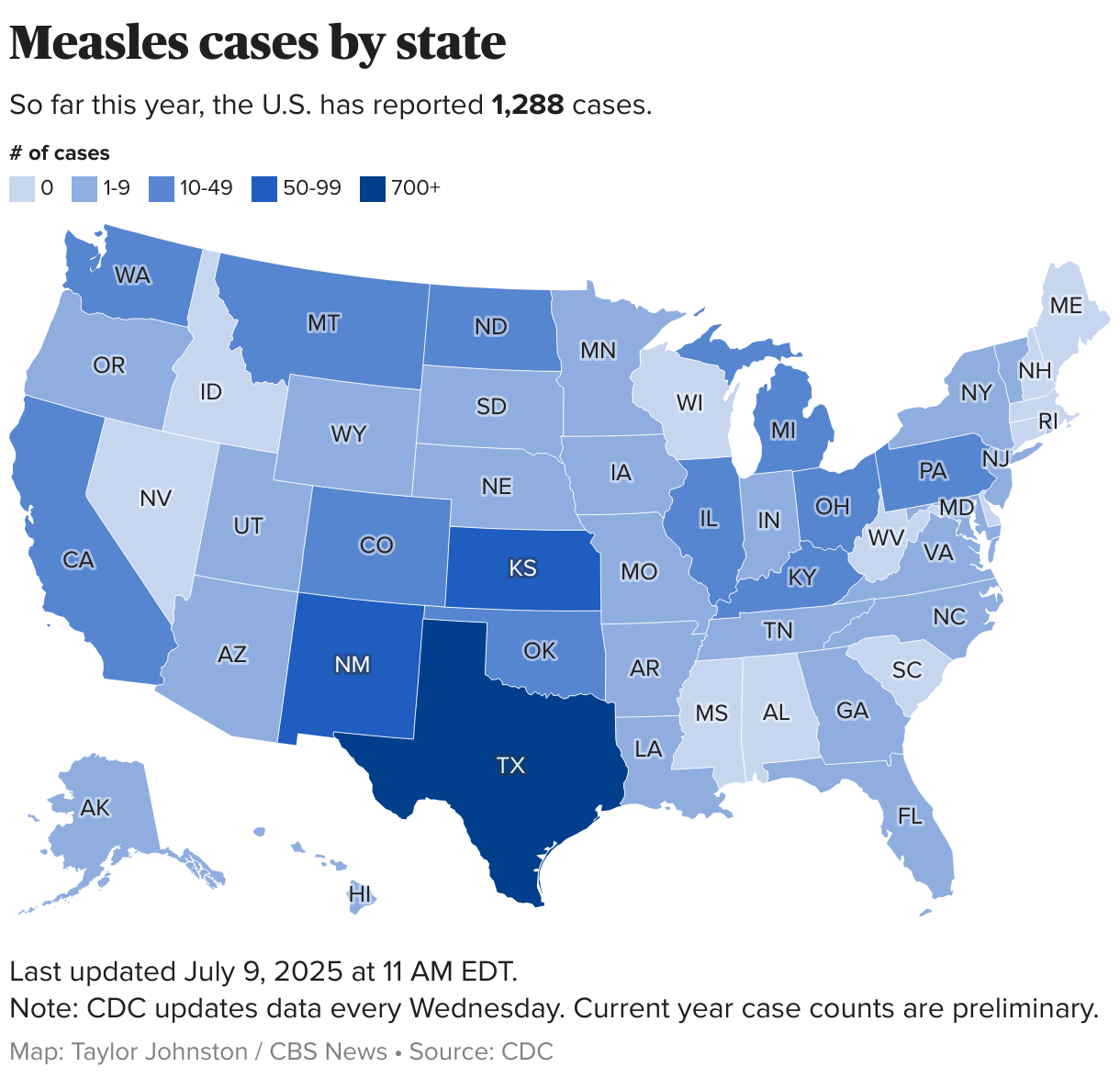

How measles cases spread
The measles virus is airborne and is one of the most contagious infectious diseases. A person can be contagious for several days before they develop the rash that often accompanies measles, the CDC says. The virus spreads through the air when an infected person coughs, sneezes, talks or even just breathes, and it can continue to infect others in the area for up to two hours after the infected person leaves.
Measles is primarily a respiratory virus, and in some cases it can cause severe infections in the lungs and brain that can lead to cognitive issues, deafness or death. But the vaccine, which is normally given as part of the combination measles-mumps-rubella (MMR) vaccine, is safe and highly effective at preventing it, doctors and health experts say.
Before the first measles vaccine became available in the 1960s, between 400 and 500 Americans — mostly children — died every year from measles.

Health experts point to lower vaccination rates as a reason for the increase in measles. Nationwide, a recent study found the MMR vaccination rate decreased from 93.92% in the 2017-2018 school year to 91.26% in the 2023-2024 school year, looking at county-level data in 33 states. A 95% vaccination rate is needed for herd immunity, which prevents outbreaks.
The Texas outbreak was originally centered in a rural Mennonite community with a lower vaccination rate, and most of those affected have been children and teenagers, nearly all of whom were unvaccinated or had an unknown vaccination status. State and local health officials confirmed the first patient who died was an unvaccinated school-aged child, and the second was an unvaccinated 8-year-old girl. Neither of the children had underlying health conditions, the Texas health department said. The death of one adult in New Mexico was also linked to measles.

Measles symptoms
Initial measles symptoms include fever, cough, runny nose, red eyes and a characteristic rash that begins to develop a few days later.
While most people’s symptoms improve, about 1 in 5 unvaccinated people who get measles will be hospitalized. About 1 out of every 1,000 children with measles will develop brain swelling that can lead to brain damage, and up to 3 of every 1,000 children who become infected will die, the CDC says.
There is no antiviral drug or treatment that can cure measles, but medical care can help relieve symptoms. Doctors have some treatment options available to address complications like pneumonia or bacterial infections that can develop in measles patients.
Source link


